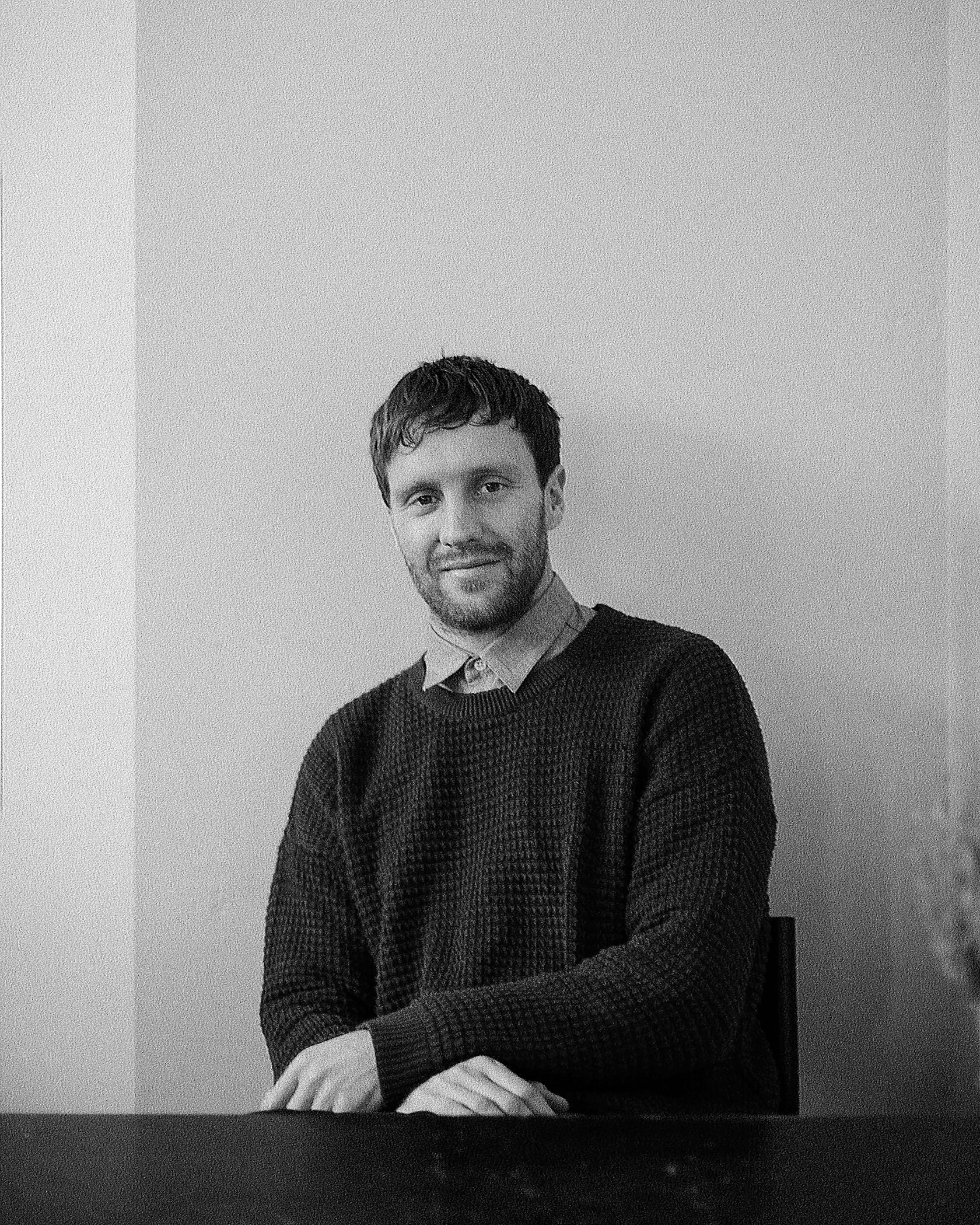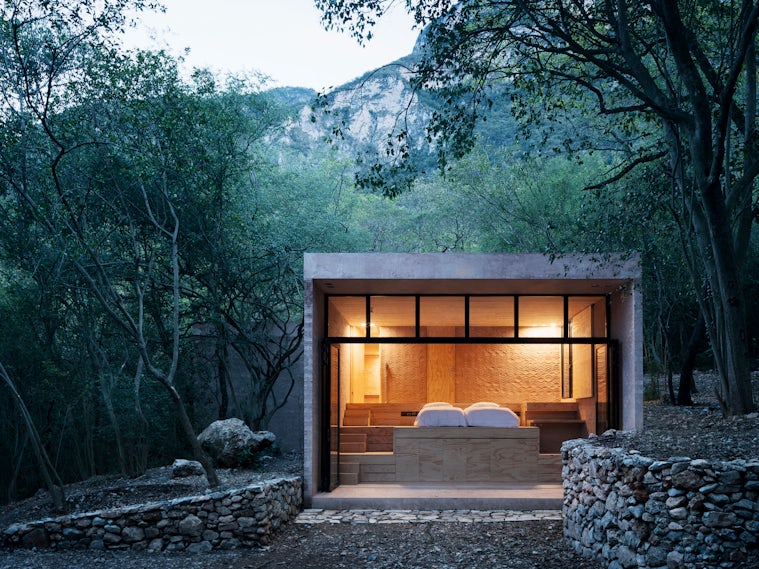Brick & Wonder is a curated platform of the highest-quality homes for sale worldwide. Launched by Lang Architecture in 2016, Brick & Wonder provides access to homes in the marketplace with design integrity that have the capacity to improve how we feel, think, interact and ultimately live our daily lives. This week, Architizer shares an interview originally published on Brick & Wonder, conducted by Ed Thompson.
Walking through Dalston, London, in the early morning light, Rory Gardiner leaned over his viewfinder, peering through the lens at a shadow slashing across the corner of a brick building opposite.
Gardiner’s father was an architect, working in Melbourne, Australia. From a young age, Gardiner gained an understanding of form, light, structure and materiality. He became interested in photography partly for its nostalgic quality — the ability to capture and record memories from vacations and travels. Gardiner went on to study at RMIT, Melbourne, extending his course over five years while he earned his stripes assisting for professional photographers.

RMIT Design Hub at the Royal Melbourne Institute of Technology in Melbourne, Australia, designed by Sean Godsell Architects
In his final year at school, he was short-listed for a Sony photography competition in London. His tutor invited Gardiner to make the trip to the show. “I never got on the plane home,” Gardiner mused as we sat down for coffee. He has now lived and worked in London for six years.
“From a photographic perspective, I like things that deliver a lasting experience. They tend to be sculptural, with a program that is a non-essential activity, like a museum or a pavilion.”
“I met some good people, and within a month I got a job for the Tate gallery. They wanted photos for their website that created the feeling of being there in person. At the time, I was shooting quite fluidly and loosely, and they liked the style. I made the horrific mistake of giving them unretouched photos — without watermarks — and they just put them up on the site. They’re still up there today!”
We asked what kinds of architecture he finds most compelling. “My father is a residential architect, and he delivers projects people really want to live in. It’s functional and simple, and I like that kind of work in terms of an approach to community and urban development,” Gardiner explained.
“From a photographic perspective, I like things that deliver a lasting experience. They tend to be sculptural, with a program that is a nonessential activity like a museum or a pavilion. The architecture is much more experimental, but also people move around the space differently. They tend to mill around without too much purpose, doing strange things. Photographically that’s a winning combination,” Gardiner laughed. “I love architecture that uses only a few materials. For many years, I’ve been photographing brutalism in one form or another. I’m drawn to architecture that doesn’t overload the senses. The Japanese and the Swiss are very good at that!”

The Long Museum in Shanghai, China, designed by Atelier Deshaus
Gardiner’s photographs often show a playful sensitivity to light. The sense of nostalgia is evident in much of his work, too. Photographic “noise” often permeates the photos, lending a tactile quality to the finished images, evoking the materiality of the architecture itself.
“The emotions you are left with in a building are what interest me.”
Naturally, light is the obsession of any photographer, but there is a particular time of day that he prefers to shoot. “I love ‘the blue hour,’” Gardiner explained. “As the sun goes down, the sky wraps everything in a flat, bluish light. It’s seems very surreal, but it is a real phenomenon. If you are close to the equator, it passes very quickly. In England, you get a much longer twilight, so you get these really long blue hours. It gives me this funny, tingly excitement.”

Los Terrenos in Monterrey, Mexico, designed by Tatiana Bilbao
Gardiner seldom uses artificial light in his photography, preferring the cooler tones of daylight. This means he needs to move fast and be flexible on a client shoot. “In commissioned architectural photography, you have a shot list to work through and you can’t shoot every shot in the same light. Often, architecture is shot in the middle of the day in raw, neutral light.
“That depicts the architectural program rather than the materiality or the experience; it’s more like documentation,” he explained. “I would rather show something looking as good as I think it can look. The emotions you are left with in a building are what interest me. I’m not an architect, so I’m not really interested in how the architectural technicalities have been achieved. What’s interesting to me is how someone experiences the space.”

The Museum of Islamic Art in Doha, Qatar, designed by I.M. Pei
We asked how brokers and developers could do a better job of the photography for architectural homes for sale. “Photography is the main point of contact for selling the house, so it’s really worth investing the time and money to do it properly. If you spend $5,000 on the photography and work with a stylist instead of spending $1,000, it can make a difference of $50,000 in the sale price,” Gardiner told us. “Work with a stylist and replace some if not all the furniture. Invest in a photographer and stylist you actually like.”

Clapton Warehouse in London, U.K., designed by Sadie Snelson
A good way to find a photographer is to work with a publicist, especially if you’re not naturally visually inclined. “The publicist will put a few photographers forward who will tender on the project,” says Gardiner.
The weather is an important factor, too. Although gardens look their best in the summer, the harsh light might make achieving emotive photographs difficult. “I tend to advise clients on seasons — if they have time,” Gardiner explained. “The autumnal period has very good light. In the Northern Hemisphere, north-facing façades are a problem in the winter because there is no sun on them.”

The Long Museum
As we finished coffee, Gardiner spoke about the most enjoyable parts of his work. “It’s those moments to yourself when multiple things collide and you know you’ve got a good picture. I’ve started shooting the new Tate gallery in London, just for myself. I had a shot lined up with a long, empty, brick façade. It was a foggy morning, and I’d been shooting for about an hour. Suddenly a dog walked into the bottom corner of the frame and just cocked its leg. I was so happy for hours afterwards. It was like a career highlight! It’s nice when the effort you’ve put in and the luck that’s involved come together to make a great photograph.”

Rory Gardiner, photographed by Ed Thompson
Words by Ed Thompson. All images © Rory Gardiner
Rory Gardiner is available for global commissions and has experience shooting institutional and residential architecture across Europe, Mexico, Australia, East Asia and the U.S.
{% partner_block logo=”/static/img/partners/brickandwonder.png” description=”Brick & Wonder is a curated platform of the highest quality homes for sale worldwide.” call_to_action=”Visit Brick & Wonder →” url=”https://brickandwonder.com/” header=”In Collaboration With” %}









